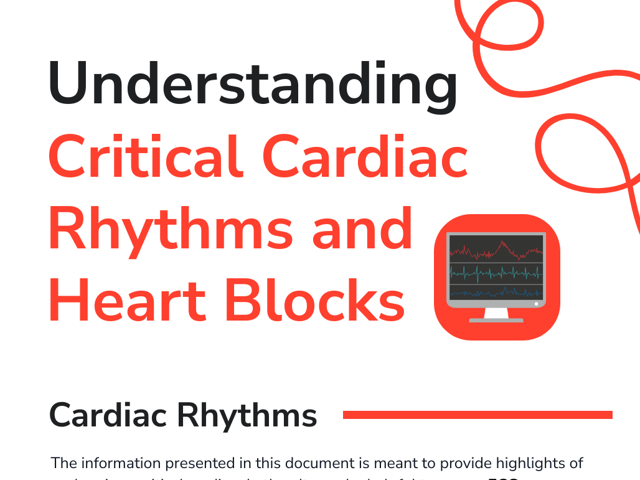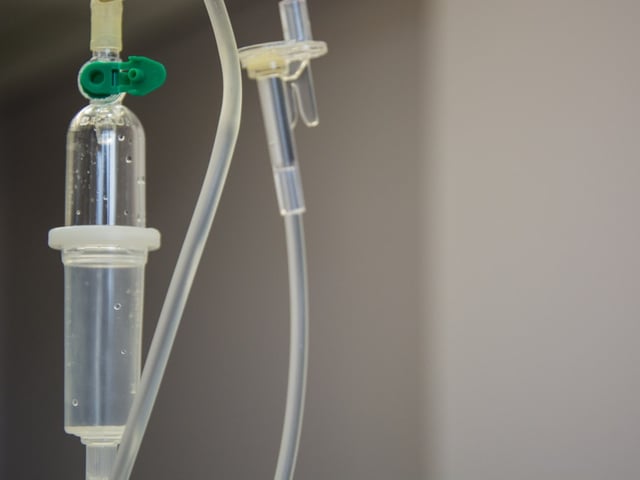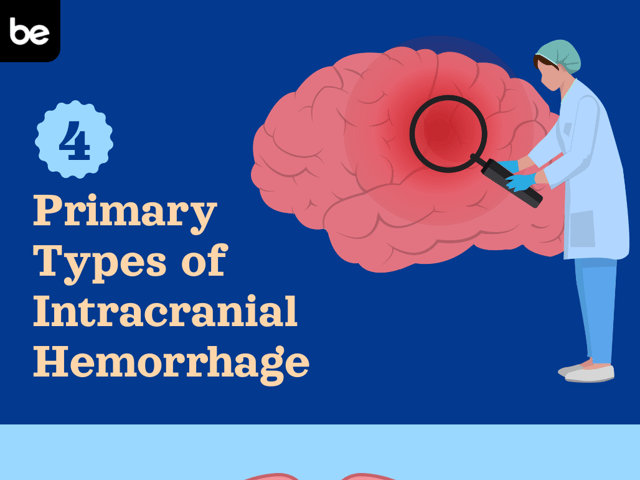
Understanding Critical Cardiac Rhythms and Heart Blocks
Understanding cardiac rhythms helps critical care nurses gain insight into their patients’ conditions. Critical care nurses must be well-versed in which cardiac rhythms are normal, abnormal, and dangerous. While preparing for the CCRN test remember to review all of the cardiac rhythms, including heart blocks, discussed here.
Cardiac Rhythms
The information presented in this document is meant to provide highlights of each unique critical cardiac rhythm. It may be helpful to use an ECG resource where the images of the ECG tracings are available while reading through the rhythm descriptions. The CCRN tests both the differences in the cardiac rhythms as well as the correct identification of rhythm strips.
Sinus Rhythm
Sinus rhythm is the normal, expected rhythm of the heart. In this rhythm, the nurse should observe a distinct P wave, QRS complex, and T wave. The P:QRS interval is 1:1, indicating one P wave for every QRS complex. The PR interval should range between 0.12-0.20 seconds and the QRS complex should last no more than 0.12 seconds. The heart rate in normal sinus rhythm ranges between 60-100 beats per minute.
Sinus Bradycardia
Sinus bradycardia occurs when there is a decrease in impulses from the sinus node. The rhythm of the heart, in this case, is normal; however, it is slower than 60 beats per minute. The PR interval, QRS complex, and P:QRS ratio are the same as normal sinus rhythm.
Sinus Tachycardia
Sinus tachycardia occurs when there is an increase in impulses from the sinus node. The rhythm of the heart, like with bradycardia, is normal; however, the speed of the pulse is quickened. Patients in sinus tachycardia will have a heart rate greater than 100 beats per minute. The P waves are present but may become part of the preceding T wave. The PR interval, QRS complex, and P:QRS ratio are the same as normal sinus rhythm.
Supraventricular Tachycardia
During supraventricular tachycardia (SVT), the patient’s heart rate will exceed 100 beats per minute up to 200-300 beats per minute. Onset of SVT is usually sudden and episodic in nature. The rate, while fast, is regular. The P wave is present but is caught in the preceding T wave and the QRS appears normal. The typical PR interval is 0.12 to 20 seconds and the QRS interval is 0.04 to 0.11 seconds. The P:QRS ratio is 1:1.
Sinus Arrhythmia
Sinus arrhythmia is an irregular heart rhythm due to vagus nerve stimulation. In sinus arrhythmia, the pulse most commonly changes with inhaling and exhaling. The patient with sinus arrhythmia usually has a pulse between 50-100 beats per minute. While the heart rate fluctuates, the P waves precede the QRS. The PR interval, QRS complex, and P:QRS ratio are normal.
Premature Atrial Contractions
Premature atrial contractions are extra atrial beats precipitated by an electrical impulse to the atrium that occurs before the pulse to the sinus node. This results in an extra P wave and a normal or slightly abnormal QRS. The P-P and R-R intervals will be irregular and vary in length. The PR interval, QRS complex, and P:QRS ratio remain normal.
Atrial Flutter
Atrial flutter occurs when the atrial impulse rate is fast, typically 250-400 beats per minute. However, due to the blocking of the atrial impulses by the AV node, ventricular fibrillation is prevented. During atrial flutter, the atrial rate will read 250-400 beats per minute while the ventricular rate remains regular at 75-150 beats per minute. P waves take on a saw-toothed appearance and the PR interval is difficult to measure. The QRS complex appears normal and the P:QRS ratio is 2-4:1.
Atrial Fibrillation
Atrial fibrillation is created by rapid, disorganized atrial electrical impulses. During atrial fibrillation, the atrium cannot organize adequately and struggles to effectively pump blood through the heart. The atrial rate can range between 300-600 beats per minute whereas the ventricular rate is between 120-200 beats per minute. Fibrillatory waves are present instead of P waves and the PR interval cannot be measured. The QRS complex appears normal. The P:QRS ratio is highly variable.
Premature Junctional Contractions
Premature junctional contractions occur due to premature impulse at the AV node. The ECG may appear normal, but QRS complexes may come quicker than normal. The P wave can be absent or it can precede or follow the QRS. The P wave may also be inverted. The QRS complex is typically normal in shape but the P:QRS ratio can vary.
Junctional Rhythms
Junctional rhythms occur when the AV node takes over the pacemaker work of the SA node. The AV node sends impulses between 40-60 beats per minute. The P waves may be inverted, absent, or hidden in the QRS. The QRS is usually of normal shape and duration. The P:QRS ratio can be <1:1 or 1:1. Junctional tachycardia occurs when the heart rate exceeds 100.
AV Nodal Reentry Tachycardia
AV nodal reentry tachycardia is classified by a fast ventricular rate. The ventricular rate can range between 75-250 beats per minute while the atrial rate falls between 150-250 beats per minute. The P waves can be difficult to see but the QRS complexes are usually normal. The P:QRS ratio is 1-2:1. Other names for the AV nodal reentry tachycardia include paroxysmal atrial tachycardia or supraventricular tachycardia (if no P waves are present).
Premature Ventricular Contractions
Premature ventricular contractions (PVC) are irregular, extra heartbeats beginning in the ventricles. The heart rate is usually normal outside of the PVCs. During a PVC, the QRS is oddly shaped and greater than 0.12 seconds in duration. Outside of the PVCs, the QRS appears normal.
Ventricular Tachycardia
Ventricular tachycardia is defined as greater than three premature ventricular contractions (PVCs) in a row and a ventricular rate of 100-200 beats per minute. QRS complexes are oddly shaped and greater than 0.12 seconds. The P waves may be undetectable and the PR interval is irregular. Ventricular tachycardia is extremely dangerous.
Narrow Complex and Wide Complex Tachycardias
Narrow complex tachycardia is defined by supraventricular stimulation. The excess stimulation causes a quickened QRS and a heart rate greater than 100 beats per minute.
Wide complex tachycardia is most frequently caused by ventricular tachycardia. During wide complex tachycardia, the heart rate exceeds 100 beats per minute and the QRS duration is greater than 12 seconds.
Ventricular Fibrillation
Ventricular fibrillation occurs as a result of disorganized ventricular electrical activity. The rate is rapid, greater than 300 beats per minute, and erratic. On the ECG, there is no atrial activity present. Clinically, a patient in ventricular fibrillation will not have a palpable pulse, audible pulse, or respirations. This rhythm is extremely dangerous.
Idioventricular Rhythm
Idioventricular rhythm occurs when the Purkinje fibers create electrical impulses. The ventricular rate ranges from 20-40 beats per minute. P waves will be missing on the ECG and the QRS will have a bizarre appearance and last longer than 0.12 seconds. This rhythm causes a decrease in cardiac output and may cause syncope or loss of consciousness.
Ventricular Asystole
Ventricular asystole is the absence of an audible heartbeat, palpable pulse, and respirations. It is otherwise defined as cardiac arrest. P waves may occur intermittently with occasional QRS escape beats. Otherwise, the ECG in this rhythm appears as a flat line. This rhythm is extremely dangerous and requires CPR.
Sinus Pause
When the sinus node fails to properly stimulate the heart contraction, a sinus pause occurs. Pauses can occur for a few seconds to a few minutes. Pulse rate can vary and patients may have syncope and loss of consciousness. This can be a dangerous rhythm and may need a pacemaker to correct.
Heart Blocks
Heart blocks are more complicated critical cardiac rhythms. In heart block, an electrical signal from the AV or the SA nodes is misrepresented or miscued. When heart block occurs, patients may develop serious symptoms that require intervention such as defibrillation or pacemaker insertion to encourage a return to or maintenance of a more normal cardiac rhythm.
First-Degree AV Block
First-degree AV block is classified by the occurrence of slower than normal atrial impulses. During this rhythm, the P and QRS sequence in normal fashion; however, the PR interval is greater than 0.20 seconds. The QRS may be narrowed if there is an abnormality in the AV node or widened if there is damage to the AV node and bundle branches. The P:QRS ratio remains 1:1.
Second-Degree AV Block, Type I
In second-degree AV block, Type I, also known as the Mobitz type I or Wenckebach block, atrial impulses are lengthened until one impulse drops completely. The ECG rhythm strip will show more P waves than QRS. The P-P interval is regular but the R-R interval will shorten with each atrial impulse. The QRS complex will appear normal. The P:QRS ratio may be 3:2, 4:3, or 5:4 and may vary within a specific length of an ECG tracing.
Second-Degree AV Block, Type II
In second-degree AV block, Type II, commonly known as Mobitz type II or Hay block, atrial beats are blocked rather than interrupted. Some atrial impulses can also be conducted unpredictably. The block typically occurs below the AV node in the bundle of His, bundle branches, or Purkinje fibers. The PR intervals remain steady but the QRS may be widened. There are usually more P waves than QRS complexes and the ratio may result in a 2:1, 3:1, or 4:1 pattern. This block pattern can be very dangerous and may produce Stokes-Adams syncope. It may require defibrillation or pacemaker insertion to correct.
Third-Degree AV Block
Third-degree AV block occurs when the atrial impulse rate is 2-3 times more than the pulse. Instead of being conducted together, the atrial P and ventricular QRS are stimulated by different impulses secondary to AV dissociation. The PR interval is very irregular in this rhythm and P waves occur more frequently than the QRS complexes. Because there is no relationship between the P and QRS components, no set ratio can be identified. Patients in third-degree AV block usually have bradycardia which may require a dual-chamber pacemaker to correct.
Bundle Branch Blocks
Two types of bundle branch blocks exist: right bundle branch block (RBBB) and left bundle branch block (LBBB).
In RBBB, the conduction is blocked in the right bundle branch. This rhythm results in normal P waves but the QRS complex is widened and notched with a rabbit-eared appearance. The PR interval may be normal or slightly prolonged and the QRS complex exceeds 0.12 seconds. The P:QRS ratio remains stable at 1:1 and the patient should experience a regular rhythm.
In LBBB, conduction is blocked in the left bundle branch. This rhythm results in normal P waves but the QRS complex is widened and notched with an M-shaped appearance. The PR interval may be normal or prolonged and the QRS complex exceeds 0.12 seconds. The P:QRS ratio remains stable at 1:1 and the patient should experience a regular rhythm.
Cardiac rhythms are essential to know in critical care medicine. Nurses must be able to quickly and correctly identify changes in patients’ cardiac rhythms to help prevent severe complications should complicated arrhythmias arise. For more in-depth information on cardiac rhythms, heart blocks, and medical concepts, check out our CCRN study guides. To test your nursing knowledge, check out our free CCRN practice tests.

Keep Reading

CCRN Blog
Is CCRN Certification Worth It?
The CCRN (Critical Care Registered Nurse) Certification stands as a tes…

CCRN Blog
Is the CCRN Exam Hard?
In the US, over 700,000 people work in critical care units (CCUs). With…

CCRN Blog
Traumatic Brain Injury and Intracranial Hemorrhage
Traumatic brain injury and intracranial hemorrhage are two common diagn…